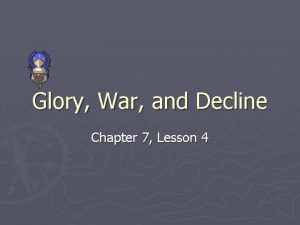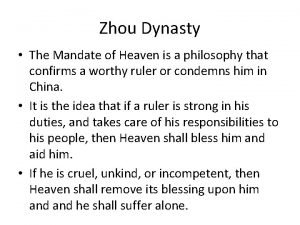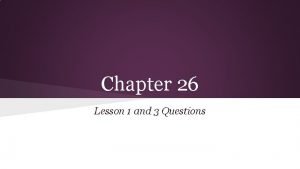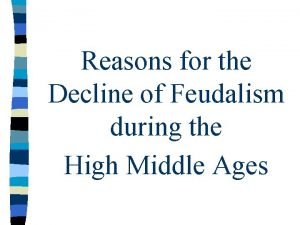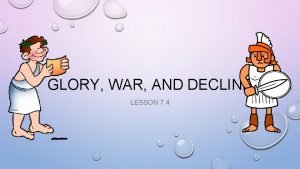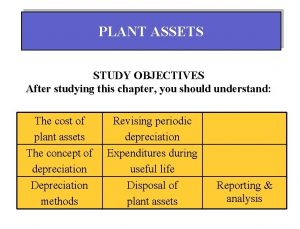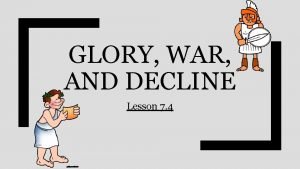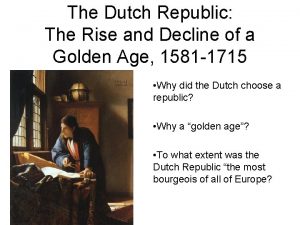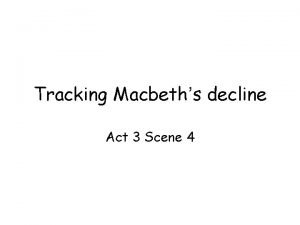Staging Jewishness in Decline Irne Nemirovskys David Golder





































- Slides: 37

Staging Jewishness in Decline. Irène Nemirovsky's David Golder vis-a-vis the Works of Bruno Schulz Kris Van Heuckelom KU Leuven - kris@vanheuckelom. be


David Golder in David Golder (France, 1931, dir. Julien Duvivier) Jacob in Sanatorium under the Sign of the Hourglass (Poland, 1973, dir. Wojciech Jerzy Has)



"The Eternal Fairy-Tale"

Xięga Bałwochwalcza (1920 -22) The Idolatrous Book

Gender relations in The Idolatrous Book (1) Female domination (sadism) Male submissiveness (masochism) „Undula The Eternal Ideal”

Gender relations in The Idolatrous Book (2) ● Psychobiograpical approach: Schulz as a masochist ● Artistic context: mythological, iconic, literary intertextuality

Classical mythology Undula ~ a contemporary Venus “On Cythera”

Iconographic tradition D. Velazquez, Venus At Her Mirror Cover of The Idolatrous Book

Demonic femme fatale ● Fin-de-siècle decadentism ● the grotesque F. Rops, Pornocrates

Literary sources Undula ~ pictorial version of L. von Sacher-Masoch’s Wanda


Book within a book ~ Painting within a painting Cover of The Idolatrous Book (1920 -1922)

The Idolatrous Book as autoreferential artefact (1) 1. the material product created by the artist (a portfolio of graphics entitled The Idolatrous Book) Cover of The Idolatrous Book

The Idolatrous Book as autoreferential artefact (2) 2. a similar object (a book) being depicted on the graphics themselves (some of which are entitled „The Idolatrous Book”) Frontispiece of The Idolatrous Book

1. The book as a work-in-progress Undula u artystów „Undula With The Artists”

2. Finished book presented to the idol Undula u artystów „The Idolatrous Book”

Gender & word-image relations The book as a medium of verbal expression is represented throughout Schulz’s portfolio as a typical male attribute, whereas the idol is given an obvious female shape.

Book covers and frontispieces of The Idolatrous Book (1)

Book covers and frontispieces of The Idolatrous Book (2)

Iconoclasm & gender seductive attractiveness of paintings ~ seductive beauty of the female sex (Freedberg 1989)

Double dimension of idolatrous behaviour in The Idolatrous Book (1) Act of veneration (“Thou shalt not bow down thyself”) “Undula The Eternal Ideal” “The Enchanted City”

Double dimension of idolatrous behaviour in The Idolatrous Book (2) Act of image creation (“Thou shalt not make any graven image”) „Undula With The Artists”

“Pictorial turn” (cf. Mitchell 1994) The creative forces of masculinity are redirected from the domain of the sacred text to the female sphere of images and image production. The Book itself is idolatrous!

The Idolatrous Book as a visual narrative = A book of graphics containing a series of subsequent scenes

The “Idolatrous Book” as an artistic concept Through the mise-en-abime effect, Schulz’s The Idolatrous Book at the same time formulates and implements the idea of interartistic contamination.

Schulz’s transgression of boundaries 1. Religious Law: The Second Commandment 2. Artistic Law: G. E. Lessing’s secular discourse of iconoclasm cf. Clement Greenberg

The Idolatrous Book or The Adulterous Book Cover of The Idolatrous Book “The Idolatrous Book”

Ficowski (1988: 58) The book offered to the idol is “a harbinger of Schulz’s Word, a proclamation of his work as a writer. ” “The Idolatrous Book”

Schulz’s artwork & fiction All existing boundaries between different forms of art are in fact fluid, and thus artificially set up, as all individual artefacts (whether visual or verbal) turn out to be nothing more than similarly defective references to the same reality of interlacing codes. . ”

Stala (1993: 104) “The Schulzean narrator unveils his techniques, displays his method, consciously reveals the iconic character of the image. He records reality as if it was a picture; while the realistic narrator depicts the picture as if it was reality. ”


KONIEC THE END

Staging Jewishness in Decline. Irène Nemirovsky's David Golder vis-a-vis the Works of Bruno Schulz ”Dedication” (from The Idolatrous Book, 1920 -22) Kris Van Heuckelom K. U. Leuven - kris@vanheuckelom. be

The Pictorial Turn of Bruno Schulz ”Dedication” (from The Idolatrous Book, 1920 -22) Kris Van Heuckelom K. U. Leuven - kris@vanheuckelom. be
 Mark golder
Mark golder Gary fish maine
Gary fish maine Chapter 7 lesson 4 glory, war, and decline answers
Chapter 7 lesson 4 glory, war, and decline answers Decline hic haec hoc
Decline hic haec hoc Exponential and logarithmic inequalities
Exponential and logarithmic inequalities What is the mandate of heaven
What is the mandate of heaven What led to the decline of the gunpowder empires
What led to the decline of the gunpowder empires Chapter 26 lesson 1 the decline of the qing dynasty
Chapter 26 lesson 1 the decline of the qing dynasty Why mauryan empire decline
Why mauryan empire decline Voici que la saison décline
Voici que la saison décline Causes for the decline of feudalism
Causes for the decline of feudalism Davis slope decline theory
Davis slope decline theory 3.03 quiz: war glory and decline
3.03 quiz: war glory and decline What caused the decline of classical civilizations
What caused the decline of classical civilizations Fashion life cycle
Fashion life cycle Sea otter population decline
Sea otter population decline Why did egypt fall
Why did egypt fall Orange order decline
Orange order decline The decline and fall of the romanov dynasty
The decline and fall of the romanov dynasty Population decline
Population decline Units of activity method
Units of activity method Decline of the delhi sultanate
Decline of the delhi sultanate Decline of the papacy
Decline of the papacy Double decline balance method formula
Double decline balance method formula Decline of qing dynasty
Decline of qing dynasty Glory war and decline
Glory war and decline Sensory decline
Sensory decline Global climate is warming has been well documented
Global climate is warming has been well documented Free face slope
Free face slope Declining invitation dialogue
Declining invitation dialogue Why did the dutch republic decline
Why did the dutch republic decline Airline reservations typically decline after
Airline reservations typically decline after What factors led to the decline of the roman republic
What factors led to the decline of the roman republic Abbasid decline
Abbasid decline I am cabined cribbed confined
I am cabined cribbed confined Decline of sparta
Decline of sparta Boston matrix product life cycle
Boston matrix product life cycle Weitzel and jonsson’s model of organizational decline
Weitzel and jonsson’s model of organizational decline


